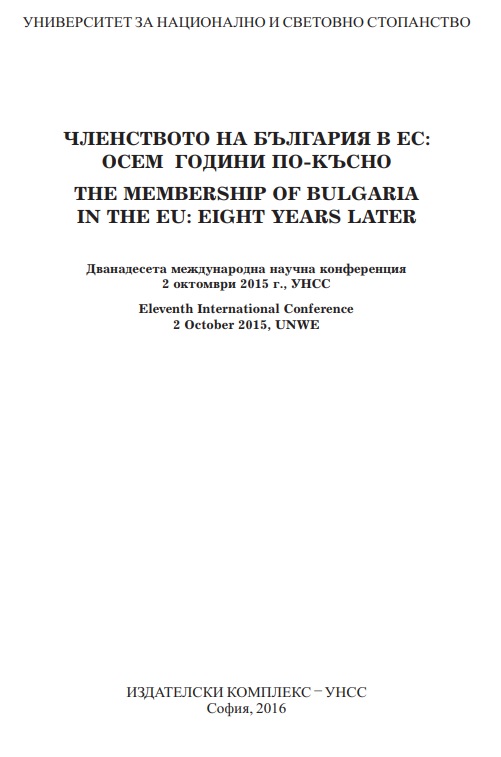Финансови инструменти – механизъм за финансиране на бизнеса: практика и научени уроци
Financial Instruments as a Mechanism for Financing of Business: Practices and Lessons Learnt
Author(s): Svetlana Aleksandrova-Zlatanska
Subject(s): Economy, Supranational / Global Economy, Financial Markets, Public Finances
Published by: Университет за национално и световно стопанство (УНСС)
Keywords: Cohesion Policy; European Union; ERDF; Cohesion Fund; ESF; Structural Funds
Summary/Abstract: The Cohesion policy of the European Union is aimed at mitigating economic and social disparities among the member states through support of the economic growth, competitiveness, innovations, sustainable development and living standard. The cohesion is carried out through the following structural funds – European Regional Development Fund (ERDF), European Social Fund (ESF), Cohesion Fund (CF). The total amount of the EU budget for the period of 2014-2020 is EUR1 082 billion out of which EUR351,8 billion are allocated for cohesion. The grants given to the beneficiaries of the operating programs are completed by resources through especially developed financial mechanism. The financial mechanism for project financing consists of financial products and schemes which provide additional financing to the beneficiaries during project execution. The utilization of financial instruments is not a novelty – their utilization is dating back in 1994 but during the 2007-2013 period their usage became more common. The applied financial instruments are part of the European Investment Fund (EIF) and the European Commission joint initiative – JEREMIE, JESSICA, JASMINE (for micro and small enterprises). The accumulated financial resource for the past period reaches 5% of the entire budget under the ERDF. The financial instruments are a manner in which the EU mobilizes private investment capacity for the execution of capital-intense projects in fields such as business, regional development and energy efficiency.
Book: Членството на България в Европейския съюз: осем години по-късно
- Page Range: 43-53
- Page Count: 11
- Publication Year: 2016
- Language: Bulgarian
- Content File-PDF

